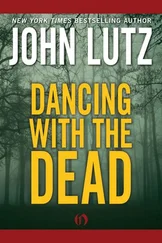Terrorist Bombs and Military Bombs
In the parlance of nuclear proliferation there are three significant nouns commonly added after the adjective nuclear: “capability,” “device,” and “weapon.” A nuclear capability means the ability to make a nuclear device or weapon. A nuclear device is the kind of weapon we have been worrying about since 9/11, a bomb too large to be delivered by traditional military means, but which can be put into a van, truck, or shipping container. A nuclear weapon denotes a bomb compact and light enough to fit into a missile warhead, or the business end of a bomb or artillery shell.
A nuclear device is the kind of crude weapon a terrorist would use. Once the necessary amount of enriched uranium is in hand, a crude terror device can be easily assembled. How much is needed is design dependent: for the simplest device more is needed than for a sophisticated bomb. A nuclear weapon is the kind of bomb we worried about during the Cold War and is what proliferators like North Korea and Iran are working on. What remains for them is to achieve the requisite miniaturization required to place a nuclear bomb inside a missile nose cone.
But a nuclear state need not have a weapon to aid terrorists. A device will suffice. For terrorists, a uranium-fueled atom bomb with a gun trigger is the preferred route. But even this is not duck soup for an individual, and not just any design suffices. [27] In 1976 an American high school student named John Aristotle Phillips sketched a design that Manhattan Project physicist Freeman Dyson judged might possibly work. Of course design alone does not a weapon make. As a kid I liked to sketch F-104 Starfighters, which I thought the coolest looking supersonic aircraft (dubbed the “Flying Coffin,” it was not always thought so cool by pilots who had to fly it). But sketching it did not mean I could build one.
The damage a crude nuclear device—in proliferation parlance, an “Improvised Nuclear Device” or IND—can inflict if detonated in the nation’s capital was recently assessed by the Federal Emergency Management Agency. A 10-kiloton blast—about 70 percent of the explosive yield of the Hiroshima bomb—would extinguish nearly all human life and obliterate most structures within a half-mile. Glass would be shattered out to 10 miles, radioactive dust would spread at least 20 miles. Severe structural damage would reach 1.5 miles from ground zero, with many casualties due to blast shockwave and thermal effects. Out to nearly 5 miles there would be light structural damage, plus numerous casualties from radioactive particulate fallout. In all, the study estimated 45,000 fatalities and 323,000 injured. This would overwhelm local medical facilities. (The 9/11 jetliner explosions yielded about 1/10 of a kiloton.)
To go nuclear using currently available methods, a terrorist organization needs the help of a state. [28] A technique called laser enrichment may someday enable creation of bomb fuel with far smaller-scale infrastructure.
This is especially true of the so-called “suitcase nuke” attack scenario. A truly man-portable nuclear weapon requires highly advanced miniaturization of components, to make it compact and light enough to be carried. Russia developed an atomic demolition munition (ADM) the size of a footlocker, not designed to be carried by one person. Tales of Russian “loose nukes” floating around are dubious; and they likely wouldn’t work now anyway, as their core elements decay over time and eventually are no longer fissile.
With this understanding of what is required to build a nuclear weapon, and a sense of the thin line between development of commercial nuclear power and the development of weapons, we turn to the Indian subcontinent.
8.
PAKISTAN AND INDIA: WHO GUARDS THE GUARDIANS?
The second myth is that nuclear weapons are OK in the hands of ‘the good guys’ and not OK in the hands of ‘the bad guys.’ We need to have a system that is not based on subjective considerations.
MUHAMMAD EL-BARADEI, UNITED NATIONS CHIEF NUCLEAR INSPECTOR, 2006
FORTY YEARS AGO THERE WERE FIVE ACKNOWLEDGED NUCLEAR powers, all formally committed to evolving international nonproliferation legal norms: the U.S., the Soviet Union, Great Britain, France, and China. A sixth, Israel, was already an undeclared nuclear club member. The 1970s were to begin extending nuclear weapons proliferation into the Third World, with two countries—India and Pakistan—eager to take President Eisenhower’s Atoms for Peace program and produce Atoms for War (at minimum, to deter each other) as well. This chapter traces the acquisition of nuclear technology by India and Pakistan, and in so doing offers the Sixth Lesson of nuclear-age history: CIVILIAN NUCLEAR POWER INHERENTLY CONFERS MILITARY CAPABILITY.
What is historically significant are two facts. First, India and Pakistan crossed the nuclear weapon threshold by equivalent routes, via proximity of civilian nuclear power generation to military nuclear deployment. India had a program for 10 years for commercial use only, until it perceived that China had come to imperil India’s national security. Pakistan saw in India’s bomb a mortal threat to its security. Both began their nuclear power programs in 1955, the year that the U.S. declassified atomic data under Atoms for Peace. Coincidentally, it was also the year the historic conference of underdeveloped nations was held in Bandung, Indonesia, where India assumed a leading diplomatic role.
But then their paths sharply diverged. India has never aided nuclear proliferation anywhere. In contrast, Pakistan’s top nuclear scientist established a clandestine network aiding nuclear proliferation efforts in several rogue states.
IN 1947, while his nephew Phillip was marrying the future Queen of England, Lord Louis Mountbatten presided over the fateful Partition of India into two states—with the new Sunni Muslim state of Pakistan flanking Hindu India on both sides. Millions died in the subsequent mass murder and mayhem. The Kashmir and Jammu states were divided, with most of Muslim-majority Kashmir taken into India by a Hindu prince. This partition enraged parties on both sides of the border, triggering wars in 1947, 1965, and 1999. Kashmir today remains a white-hot flashpoint. [29] It took delicate diplomacy conducted in 2001 and 2002 by the George W. Bush administration to defuse tensions a decade ago, but the world’s first nuclear war between two countries may well be ignited by Kashmir.
The two nations also fought in 1971—a war that politically sundered East Pakistan from West, and left hundreds of thousands dead in the newly created state of Bangladesh. Two and a half years later, on May 18, 1974, Indian nuclear scientists sent India’s leaders a message: “The Buddha smiles.” The occasion was the detonation of what India called a “peaceful nuclear explosion.”
With no bright line dividing commercial nuclear power and weapons-grade bombs, some didn’t find India’s blast so peaceful. Foremost among those concerned with the blast was Pakistan, India’s mortal adversary. Abdul Qadeer Khan was a Pakistani metallurgist working at the Amsterdam facilities of the UN’s International Atomic Energy Agency at the time of the Smiling Buddha test. In collusion with the Pakistani government he copied thousands of pages of highly confidential material on how to build enrichment facilities to extract nuclear fuel for a bomb, and spirited them back to Pakistan. Following in India’s footsteps, Khan took full advantage of Eisenhower’s ill-starred generosity, pursuant to which the United Nations had created the agency—the International Atomic Energy Agency—for which he worked.
Читать дальше












